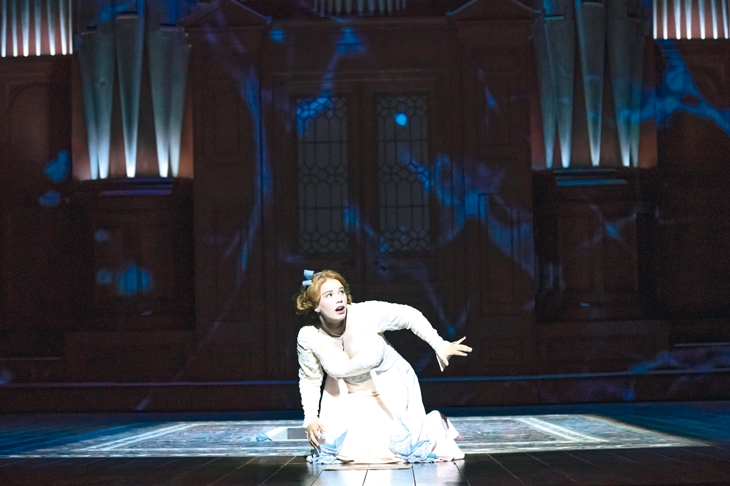The femme fatale was invented in France. A giddy, greedy child in her first incarnation, as the antiheroine of Abbé Prévost’s L’Histoire du Chevalier Des Grieux et de Manon Lescaut (1731), she had no voice of her own. Reshaped as a sphinx by Alfred de Musset, made over as a gypsy by Prosper Mérimée, plumped out with fashionable sentimentality by Massenet and mordant sensuality by Puccini, her function was to beguile and elude, to want something that those who wanted her were unable to give her, then die. In Debussy’s Pelléas et Mélisande even that wanting is stripped away. ‘Ne me touchez pas!’ sings Mélisande, but Golaud, made ugly and old for want of love, cannot or will not listen.
Where Manon grasps at gold, Mélisande lets it slip through her fingers, twice. That Debussy’s setting of Maeterlinck’s play has survived in the theatre is down to the distant glimmer of a lost crown, a lost ring, and impressions of refracted light on water that would find fuller expression in La mer (1905). Here are modal melodies that sound simultaneously ancient and modern; furtive figures for flutes and double basses; a trumpet line so precisely shaded by muted strings that it sounds like a cor anglais; vocal writing that is murmured or growled as though in the haze of hypnosis. Quickened and balanced with extraordinary sensitivity by Robin Ticciati and the players of the London Philharmonic Orchestra, the score has exceptional transparency.
The family is irreparably damaged before Christopher Purves’s bruised, boar-like Golaud finds Christina Gansch’s Mélisande in the forest. The mother of Yniold (Chloé Briot), Golaud’s son, is dead. Geneviève (Karen Cargill), Golaud’s mother, is a widow. The parentage of Pelléas (John Chest), Golaud’s insipid half-brother, is never adequately explained. Both men are said to fear the disapproval of their grandfather, Arkel (sung by Richard Wiegold on opening night). Neither fears it enough to adjust their behaviour. It is striking how often Pelléas and Mélisande are told by Golaud that they are children. Yet he, too, is an angry child, and the suffocating nature of permanent childhood is amplified by the director Stefan Herheim in his Glyndebourne debut.
While Ticciati’s Pelléas darts between sunlight and moonlight, sea spray and stagnancy, Herheim’s Pelléas is contained in the stifling panelling of an organ room. As is common in aristocratic houses, there is little privacy. Servants move about, avoiding eye contact. The allure and terror of the castle and the forest are represented in the crenellated pipes of this musical monster, which separate and reconnect, washed in blue light. A reference to Saint-Sulpice or the Madeleine, you might think, until you remember that Debussy, briefly a student of César Franck, was never much interested in the organ. A programme note reveals that Philipp Fürhofer’s set has nothing to do with the churches of Paris but is a riff on the organ room of Glyndebourne itself, conceived when Herheim’s first idea, to set the opera in a spaceship, was rejected.
Put this to one side and it is possible to luxuriate in the immaculate discipline of Herheim’s movement direction and the audacity of his and Tony Simpson’s lighting design. Voyeurism is one motif. Peering out from a window in the organ, a cuckold in a cuckoo clock, Purves’s agonised Golaud mirrors the movements of Chest’s Pelléas as he binds the hair of Gansch’s Mélisande to an empty easel. Tableaux vivants of Christ and Eve appear, while Golaud’s psychological violence towards his son extends to sexual humiliation. Herheim’s interventions turn Mélisande herself into a monster, her teeth bared in a grimace of sadistic delight at the suffering of Golaud in Act V.
It’s a vexing reading of a perplexing opera. Superb playing and singing, especially from Cargill, make it worthwhile, at least until the final minute, when Herheim’s actors stroll into the organ room (no longer a castle) in 21st-century evening wear, and stare at us staring at them.






Comments